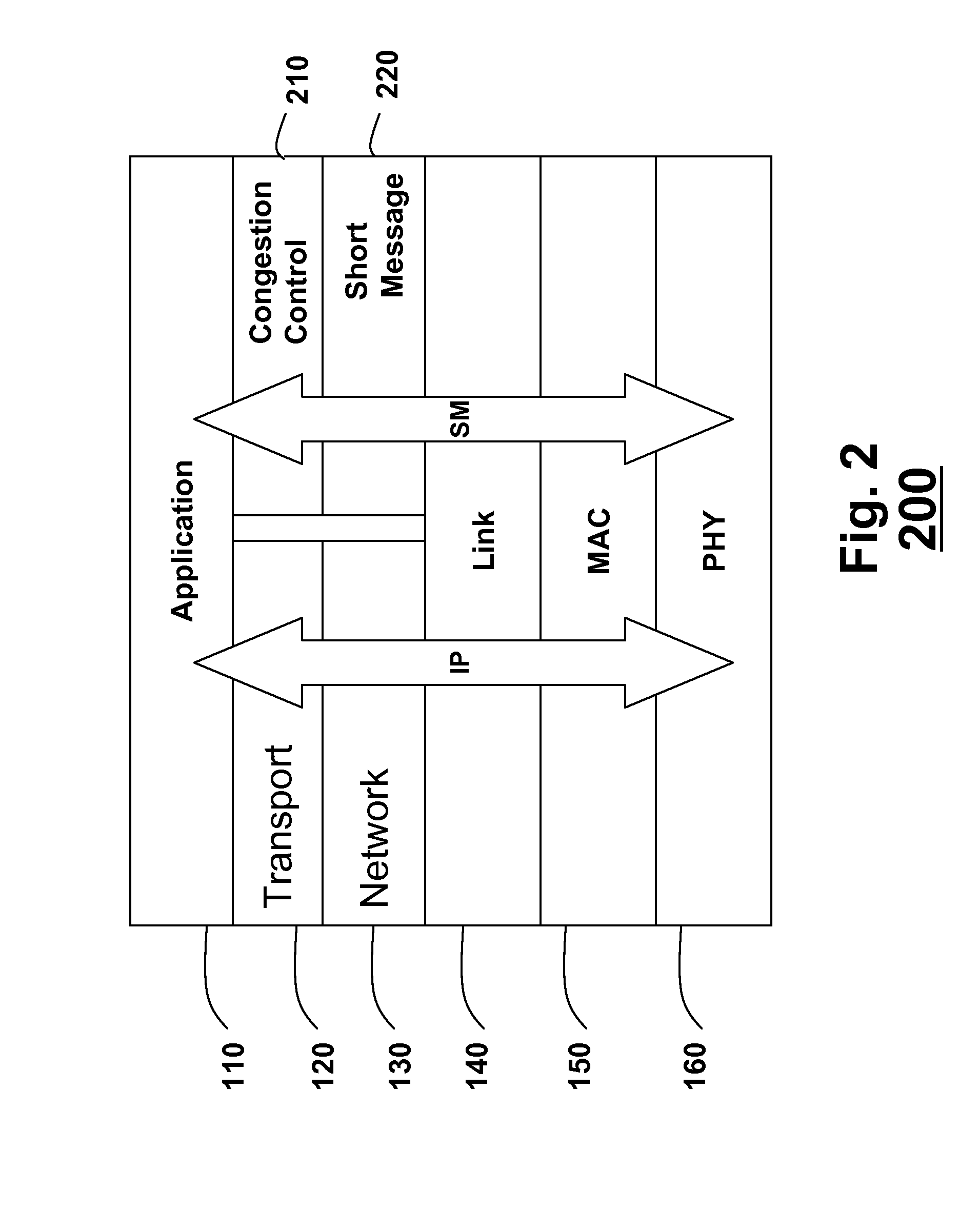Method and protocol for congestion control in a vehicular network
a vehicular network and congestion control technology, applied in data switching networks, frequency-division multiplexes, instruments, etc., can solve problems such as inability to decode messages and inability to meet criterion
- Summary
- Abstract
- Description
- Claims
- Application Information
AI Technical Summary
Benefits of technology
Problems solved by technology
Method used
Image
Examples
Embodiment Construction
[0022]Vehicular Network
[0023]As shown in FIG. 1, the embodiments of our invention provide congestion control for messages 102 in a vehicular ad-hoc network (VANET) 100 of nodes 101. Each node includes a processor 105 and a transceiver 106, i.e., a transmitter and receiver. Therefore in this description, the terms node and vehicle are used interchangeably. Because the nodes are in vehicles, the network is ad-hoc and mobile as vehicles enter and leave traffic. The nodes transceive the messages 102 on channels 103. It is understood that the messages can be transmitted as one or more packets, depending on the design of the network, and length of the message. The network can also include infrastructure nodes 104 for communicating with emergency response agencies. The processor can include memories, and input / output interfaces as known in the art.
[0024]Our congestion control manages the messages 102 entering the network 100 to prevent oversubscription of the communication channels 103. Ty...
PUM
 Login to View More
Login to View More Abstract
Description
Claims
Application Information
 Login to View More
Login to View More - R&D
- Intellectual Property
- Life Sciences
- Materials
- Tech Scout
- Unparalleled Data Quality
- Higher Quality Content
- 60% Fewer Hallucinations
Browse by: Latest US Patents, China's latest patents, Technical Efficacy Thesaurus, Application Domain, Technology Topic, Popular Technical Reports.
© 2025 PatSnap. All rights reserved.Legal|Privacy policy|Modern Slavery Act Transparency Statement|Sitemap|About US| Contact US: help@patsnap.com



